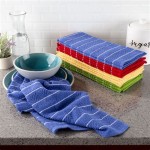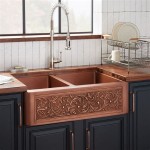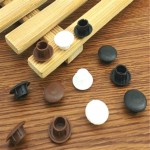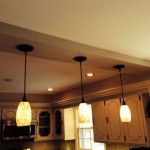White Subway Tile Kitchen: A Timeless and Stylish Choice
The kitchen, often considered the heart of the home, is a space where functionality and aesthetics must harmoniously converge. Choosing the right materials for a kitchen renovation or new build is crucial for creating a space that is both practical and visually appealing. Among the myriad of options available, white subway tile stands out as a consistently popular and enduring choice. Its versatility, affordability, and classical appeal contribute to its widespread adoption in kitchen designs across various styles.
White subway tile, characterized by its rectangular shape and glossy finish, has a rich history rooted in early 20th-century urban design. Originally used in the New York City subway system, its hygienic properties and ease of cleaning made it an ideal choice for public spaces. Over time, its clean and simple aesthetic transcended its utilitarian origins and found its way into residential interiors, particularly kitchens and bathrooms. Today, white subway tile remains a staple in kitchen design, prized for its ability to blend seamlessly with a range of design aesthetics, from traditional to contemporary.
The continued popularity of white subway tile stems from a combination of factors, including its adaptability to various design styles, its ease of maintenance, and its relatively low cost. The tile’s neutral color and simple shape serve as a blank canvas, allowing homeowners to personalize their kitchens with colorful accessories, bold countertops, and unique hardware. Its non-porous surface makes it easy to clean and resistant to stains, a crucial consideration for a high-traffic area like the kitchen. Furthermore, white subway tile is generally more affordable than many other tiling options, making it an accessible choice for a wide range of budgets.
Versatility in Design and Style
One of the most compelling reasons for choosing white subway tile for a kitchen is its remarkable versatility. This tile effortlessly adapts to a wide spectrum of design styles, allowing homeowners to create a kitchen that reflects their individual taste and preferences. Whether the desired aesthetic is classic, modern, farmhouse, or industrial, white subway tile can be incorporated seamlessly into the overall design scheme.
In a traditional kitchen, white subway tile can be paired with classic elements such as Shaker-style cabinetry, granite countertops, and warm wood accents. A traditional installation pattern, such as a standard horizontal layout, further reinforces the classic aesthetic. The grout color can be varied to create different effects. For example, a light gray grout provides a subtle contrast, while a darker grout color, such as black or charcoal, creates a more dramatic and defined look.
For a more contemporary kitchen design, white subway tile can be combined with sleek, minimalist cabinetry, stainless steel appliances, and quartz countertops. A less conventional installation pattern, such as a vertical stack bond or a herringbone pattern, can add a modern twist to the classic tile. Using a light-colored grout can help to maintain a clean and minimalist aesthetic, allowing the other elements of the kitchen to take center stage.
Farmhouse-style kitchens often embrace a rustic and charming aesthetic. White subway tile can be incorporated into this design style by pairing it with reclaimed wood accents, open shelving, and vintage-inspired hardware. A slightly imperfect or handmade tile can further enhance the rustic feel. Using a wider grout line or choosing a grout color that complements the wood tones can also contribute to the overall farmhouse aesthetic.
In industrial-style kitchens, white subway tile can be used to create a clean and functional backdrop. Pair it with exposed brick, stainless steel countertops, and industrial-style lighting fixtures. A dark grout color, such as black or gray, can emphasize the tile's grid pattern and contribute to the industrial aesthetic. Consider extending the tile all the way to the ceiling to create a dramatic and impactful statement.
Beyond the overall style, the grout color significantly affects the final look of the white subway tile. White grout creates a seamless and understated appearance, blending the tiles together for a clean and modern feel. Gray grout provides a subtle contrast, highlighting the shape of the tiles without being too overpowering. Darker grout colors, such as black or charcoal, create a more defined and graphic look, emphasizing the tile pattern and adding visual interest. The choice of grout color should carefully consider the overall design aesthetic and the desired level of contrast.
Practicality and Ease of Maintenance
Beyond its aesthetic appeal, white subway tile is also a highly practical choice for the kitchen. Its inherent properties make it a durable, easy-to-maintain, and hygienic surface, ideal for a high-traffic and often messy environment. The non-porous nature of the tile prevents the absorption of liquids and stains, making it easy to clean and resistant to damage from spills and splatters.
Cleaning white subway tile is a straightforward process. A simple wipe down with a damp cloth or sponge is often sufficient to remove everyday dirt and grime. For more stubborn stains, a mild detergent or cleaning solution can be used. It is important to avoid using abrasive cleaners or scouring pads, as these can scratch the surface of the tile. Grout lines can sometimes be more challenging to clean, but regular cleaning with a grout brush and a grout cleaner can help to prevent the buildup of dirt and mildew.
The durability of white subway tile ensures that it will withstand the rigors of daily use in the kitchen. The tile is resistant to cracking, chipping, and fading, ensuring that it will maintain its appearance for years to come. Proper installation is crucial for maximizing the lifespan of the tile. A properly installed tile backsplash will be watertight and prevent moisture from penetrating the wall behind it, preventing potential damage and mold growth.
The hygienic properties of white subway tile are another significant advantage. Its smooth, non-porous surface does not harbor bacteria or mold, making it a healthy choice for the kitchen environment. Regular cleaning helps to maintain its hygienic properties and prevent the buildup of germs. This is particularly important in areas that come into contact with food, such as the backsplash behind the stovetop or sink.
When selecting a white subway tile, it is essential to consider the size and thickness of the tile. Larger tiles require fewer grout lines, which can simplify cleaning and create a more seamless look. Thicker tiles are generally more durable and resistant to cracking. It is also important to choose a tile that is rated for kitchen use, as these tiles are specifically designed to withstand the demands of a kitchen environment.
Cost-Effectiveness and Long-Term Value
White subway tile is generally considered one of the most cost-effective tiling options available. Its readily availability and relatively simple manufacturing process contribute to its affordability. This makes it an accessible choice for homeowners on a wide range of budgets. The cost of white subway tile can vary depending on the specific type of tile, its size, and its origin. However, even higher-end white subway tile is often more affordable than other tiling options, such as natural stone or decorative ceramic tiles.
Beyond the initial cost of the tile, also consider the long-term value and cost-effectiveness of white subway tile. Its durability and ease of maintenance contribute to its long lifespan, reducing the need for frequent repairs or replacements. This can save homeowners significant money over time. The timeless aesthetic of white subway tile also ensures that it will remain stylish for years to come, avoiding the need for frequent renovations to keep the kitchen looking up-to-date.
The cost of installation should also be factored into the overall budget. While some homeowners may choose to install white subway tile themselves, it is generally recommended to hire a professional installer. A professional installer will ensure that the tile is properly installed, creating a watertight and durable surface. The cost of installation can vary depending on the size of the area being tiled, the complexity of the installation, and the location. Obtaining multiple quotes from different installers is recommended to ensure a fair price is obtained.
When comparing the cost of white subway tile to other tiling options, consider the long-term benefits and value that it offers. While some other tiles may offer a more unique or decorative look, they may also be more expensive, require more maintenance, or have a shorter lifespan. White subway tile offers a balance of affordability, durability, and timeless style that makes it an excellent investment for any kitchen renovation or new build project.
In summary, white subway tile's enduring popularity stems from its versatility, practicality, and cost-effectiveness. Its adaptability to various design styles allows homeowners to create a personalized kitchen space, while its ease of maintenance ensures a clean and hygienic environment. Furthermore, its relative affordability makes it an accessible choice for a wide range of budgets. When considering options for a kitchen backsplash or wall covering, white subway tile remains a classic and reliable choice that offers both style and substance.

Timeless Appeal Of White Subway Tiles

Timeless Appeal Of White Subway Tiles

Timeless Appeal Of White Subway Tiles

Kitchen Backsplash Ideas Inspiring Photo Gallery

These Are The Top 10 Kitchen Backsplash Trends For 2024

The Latest Backsplash Trend Is Actually A Timeless Classic

34 White Subway Tile Backsplash Timeless Classic

Kitchen Backsplash Ideas Inspiring Photo Gallery

White Matte Ceramic Subway Wall Tile 4x12

Kitchen Backsplash Ideas Inspiring Photo Gallery
Related Posts








